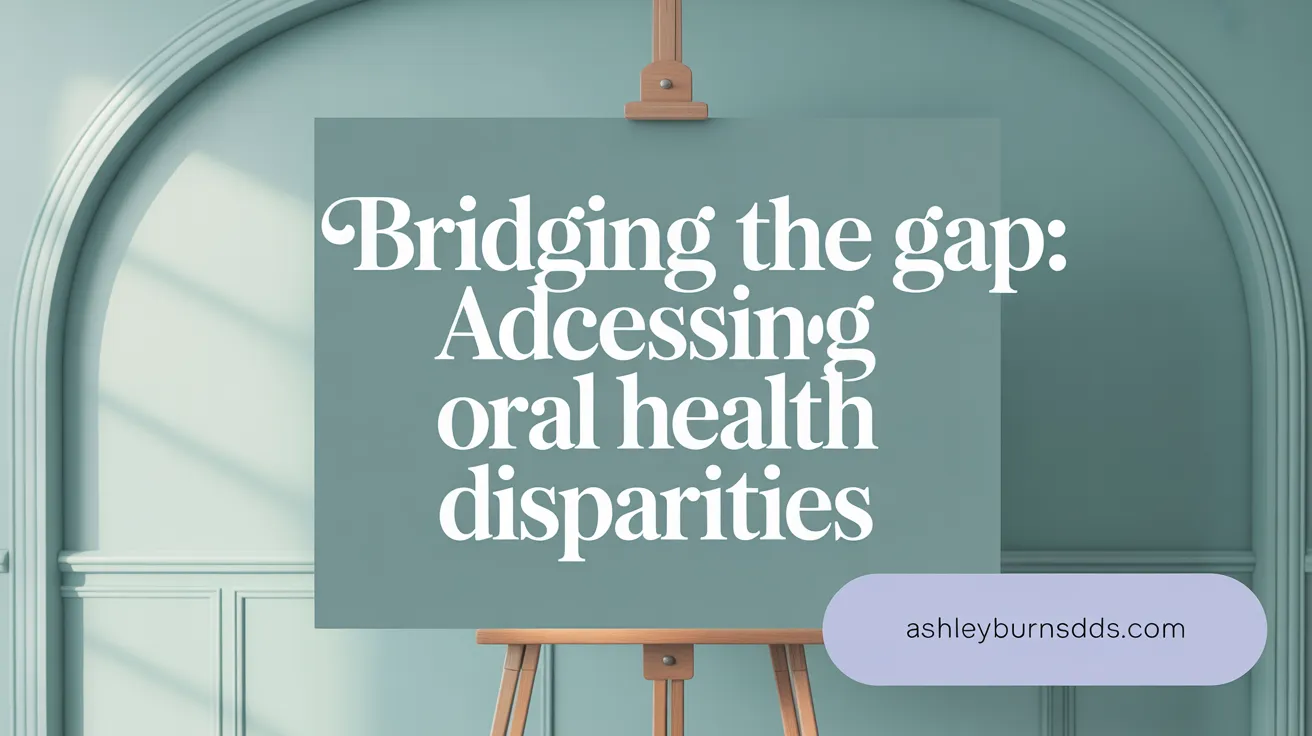Understanding Oral Health Trends Across the U.S.
Oral health remains a critical component of overall wellness in the United States, yet the landscape is marked by both progress and persistent challenges. This article explores key dental care statistics, shedding light on the prevalence of dental diseases, access to care, treatment patterns, disparities among demographics, economic ramifications, and public health initiatives. By examining recent data, we aim to provide a thorough overview of the current state of oral health for Americans.
Prevalence of Dental Diseases and Common Oral Health Issues

What are the current trends and statistics related to oral health in the U.S.?
Recent data reveal both progress and persistent challenges in U.S. oral health. In 2023, a high percentage of children and adults have sought dental care, with 86.9% of children aged 2–17 and about 64% of adults aged 18–64 having visited a dentist in the past year. Over half of adults between 20 and 59 report experiencing at least one oral health symptom, such as cavities or gum problems.
Despite increased dental visits, disparities remain. Nearly 9 out of 10 adults have faced tooth decay at some point, and 46% delay or skip dental care mainly due to cost—cost barriers are a significant obstacle for many, especially among low-income groups. Gum disease affects over 40% of adults aged 45–64, with increasing prevalence among seniors where 70.1% are affected. Tooth loss is common among older adults, with 13.2% of those 65 and older experiencing complete tooth loss. These figures highlight ongoing oral health disparities and the importance of preventive care.
What is the prevalence of dental caries and other common oral health issues in the U.S.?
Dental caries remains the most common chronic disease in the United States. About 20% of adults aged 20-64 have untreated cavities, and over 50% of children aged 6-9 have cavities in their primary teeth. Children from low-income families are twice as likely to suffer from cavities, emphasizing socioeconomic disparities.
Periodontal or gum disease affects more than 40% of adults aged 45–64 and is linked to other systemic illnesses such as diabetes, heart disease, and Alzheimer's. Among seniors, 70.1% have gum disease, making it a widespread issue among older populations. Complete tooth loss affects 13.2% of adults aged 65 and older, with higher rates in certain states like West Virginia (42%). These oral health issues significantly impact quality of life and overall health.
| Condition | Prevalence Rate | Age Group | Additional Details |
|---|---|---|---|
| Untreated dental caries | 21.3% | Adults | Higher in low-income groups |
| Dental visits in past year | 64% | Adults 18-64 | Higher among those with private insurance |
| Gum disease | 47.2% | Adults 20-64 | Rate increases with age |
| Complete tooth loss | 13.2% | Adults 65+ | 25% of seniors have lost all teeth |
| Oral health disparities | Higher in minorities & low-income populations |
Why are oral health disparities significant?
Disparities in oral health are evident by income, race, and insurance coverage. For example, over half of working-age adults experiencing poverty have untreated dental caries, compared to only 20% among higher-income groups. Minority populations, especially Black adults, experience higher tooth loss rates and lower utilization of dental services, often due to access and affordability issues.
How do oral health problems impact overall health?
Untreated oral health issues are linked to pain, disability, and systemic diseases. Periodontal disease increases the risk of heart disease by nearly 30%, and people with diabetes are twice as likely to develop gum disease. The financial impact is substantial, with over $124 billion spent annually on dental care, and untreated disease causes about $45 billion in lost productivity yearly.
Dental Care Utilization and Common Treatment Procedures

What are the typical treatment rates and common dental procedures performed across the U.S. population?
In the United States, dental service usage varies across age groups and insurance status. As of 2023, about 65.5% of adults had a dental exam or cleaning within the past year, while the rate is higher among children at 86.9%. Routine procedures mainly include teeth cleanings, examinations, and X-rays, with costs generally ranging from $75 to $200.
Restorative treatments, which address common issues like dental caries, include fillings, crowns, and root canals. Nearly 91% of adults aged 20–64 have experienced cavities, highlighting the prevalence of restorative procedures on a national scale.
Preventive measures such as fluoride treatments and sealants are routinely recommended, especially for children, to prevent decay and other oral health problems. These prevention strategies significantly reduce cavity rates, aided by water fluoridation, which CDC estimates cuts cavities by 30 to 50%.
Treatment rates and the type of procedures performed are influenced by various factors such as age, income, insurance coverage, and geographic location. Individuals with private dental insurance are more likely to access regular care, whereas cost and lack of insurance are major barriers for many, leading to untreated dental problems.
Variations by age and insurance status
Younger populations, especially children and adolescents, generally have higher visit rates when they have dental benefits through Medicaid or private insurance. For example, 63% of children with private dental insurance visited a dentist, versus 44% with public insurance, and only 20% without any insurance. Older adults, particularly those over 65, tend to have lower utilization rates, partly due to lack of coverage, with 56% of seniors uninsured for dental care.
Preventive care like sealants and fluoride treatments
Preventive services, including fluoride varnishes and dental sealants, are effective in reducing tooth decay among children and teenagers. These measures, combined with regular cleanings and checkups, contribute to decreased cavity rates and better overall oral health.
Treatment disparities
Disparities in dental care exist across racial, socioeconomic, and geographic lines. For example, Black adults are more likely to have lost teeth due to decay or gum disease than white adults. Low-income populations face higher rates of untreated caries, often due to financial barriers or lack of insurance. Additionally, geographic access to care varies, with some regions having a significant percentage of residents living far from dental providers.
| Population Group | Treatment Utilization | Typical Procedures | Barriers |
|---|---|---|---|
| Children (private insurance) | 63% | Cleanings, sealants, fluoride treatments | Insurance coverage, access to care |
| Adults (private insurance) | 53% | Restorations, cleanings | Cost, fear, lack of perceived need |
| Seniors (no dental insurance) | 43% | Tooth extractions, dentures | Cost, limited coverage |
| Low-income populations | Higher untreated caries | Fillings, extractions | Cost, limited access |
Effective management and increased preventive care are essential to reduce the high prevalence of dental diseases and disparities in treatment across the U.S.
Access to Dental Care and Disparities Among Demographics
 's access to dental care is diverse and complex, with significant disparities rooted in insurance coverage, geographic location, economic status, and race. Approximately 27% of U.S. adults lack dental insurance, resulting in high out-of-pocket expenses that serve as a barrier to regular dental visits. This issue disproportionately impacts low-income populations, rural communities, and racial minorities, who face greater challenges in obtaining preventive and urgent care.
's access to dental care is diverse and complex, with significant disparities rooted in insurance coverage, geographic location, economic status, and race. Approximately 27% of U.S. adults lack dental insurance, resulting in high out-of-pocket expenses that serve as a barrier to regular dental visits. This issue disproportionately impacts low-income populations, rural communities, and racial minorities, who face greater challenges in obtaining preventive and urgent care.
Many areas, especially rural and underserved urban communities, are characterized by dental deserts—regions with a shortage of dental professionals—making it difficult for residents to access providers within a reasonable distance. These shortages further widen the gap in oral health outcomes.
Evidence shows disparities in the use of preventive services. While 86.9% of children aged 2–17 had a dental visit in 2019, and 65.5% of adults over 18 had a recent dental exam, these rates are lower among minority and low-income groups. Black adults, in particular, are more likely to have lost teeth due to decay or gum disease, with 52% affected compared to 43% of all adults.
Dental fear, affecting about 20% of adults, is another obstacle that discourages routine visits and timely care. Financial barriers are at the forefront, with 46% of Americans delaying or skipping dental care because of costs despite recognizing its importance; total dental expenditure in the U.S. exceeds $124 billion annually.
| Demographic Group | Dental Insurance Coverage | Access Challenges | Oral Health Disparities |
|---|---|---|---|
| Children (0-18) | 53% private, 38% Medicaid/CHIP | Variations in coverage impact visit rates | Higher oral health risks in low-income children |
| Adults (19-64) | 62% private, 16% public, 22% none | Cost and insurance gaps limit care | Higher untreated decay among uninsured |
| Seniors (65+) | 33% private, 12% public, 56% none | Limited benefits, mobility issues | Significant tooth loss and untreated diseases |
Efforts like Water Fluoridation, which has reduced cavity rates by 30–50%, help improve oral health. Still, disparities remain, especially where dental insurance is unavailable or provider shortages are prevalent.
Addressing these issues requires expanding insurance coverage, increasing the number of dental providers in underserved areas, and reducing financial and fear-related barriers, ultimately working toward equitable oral health for all populations.'
Economic Impact of Oral Health Issues and Dental Care
What are the economic impacts of dental care and oral health issues in the U.S.?
The financial burden associated with dental health in the United States is substantial. Annually, Americans spend over $165 billion on dental services, with a significant portion—more than $63 billion—spent directly out of pocket. This high expenditure reflects both the cost of treatment and the preventive care that many people are unable to access due to financial barriers.
Untreated dental diseases, such as cavities and gum disease, not only cause pain and health complications but also lead to sweeping economic consequences. One notable impact is productivity loss: untreated oral health issues cost the U.S. economy an estimated $45 billion every year in lost work hours and reduced productivity.
Emergency dental care also contributes to economic strain. Each year, emergency department visits related to dental issues surpass $1.6 billion. These visits often involve higher costs and less effective treatment compared to preventive care.
Conversely, investing in preventive measures offers significant cost savings. Community water fluoridation, for example, is estimated to save the nation approximately $6.5 billion annually by reducing the incidence of cavities and the need for costly treatments.
Overall, poor oral health places a dual financial burden: direct expenses for individuals and healthcare systems, and indirect costs, such as lost productivity and increased emergency care. Addressing these issues with better access to preventive and routine dental care could substantially reduce both costs and the health impact of oral diseases.
Public Health Objectives and Emerging Challenges in U.S. Oral Health

What public health objectives exist regarding oral health in the U.S., and what progress has been made toward these goals?
Healthy People 2030 envisions a future where tooth decay is significantly reduced, access to dental care is broadened, and disparities among populations are minimized. Substantial progress has been achieved, notably through increased use of preventive measures like dental sealants, a decline in untreated cavities among children, and reductions in complete tooth loss among seniors.
Community efforts such as water fluoridation programs have contributed to cavity reduction, and there has been an expansion in the dental workforce to serve underserved areas. However, challenges persist, especially among low-income and minority populations, where access to dental care remains limited. Continued efforts are necessary to ensure equitable progress across all demographic groups.
| Progress Aspects | Achievements | Remaining Challenges |
|---|---|---|
| Preventive Care | More children receive sealants; declines in cavity rates | Disparities in access persist, especially in marginalized groups |
| Access to Services | Increased dental screening and community programs | Many adults and elderly remain without insurance or dental benefits |
| Disease Reduction | Fewer seniors losing all teeth | Rising costs and workforce shortages hinder further improvement |
What recent changes and challenges have emerged in dental health within the American population?
The landscape of dental health in the U.S. faces several hurdles. Despite steady advancements, progress has plateaued in some areas, and issues like high costs and insurance gaps continue to restrict access.
The COVID-19 pandemic exaggerated these problems, with nearly 40% of Americans skipping dental visits in 2020, leading to a 30% increase in cavities among children. The advent of new technologies like teledentistry and AI offers promising avenues to improve care delivery. However, workforce shortages and policy reforms are essential to fully realize these innovations.
Emerging challenges emphasize the need for systemic changes to address disparities, enhance affordability, and incorporate technological advances—work that is crucial for achieving comprehensive oral health coverage and outcomes across the country.
Navigating the Future of Oral Health in America
While strides have been made in increasing awareness and preventive care utilization, the United States continues to face significant challenges in oral health. Disparities driven by socioeconomic, racial, and geographic factors remain entrenched, and barriers such as cost and limited insurance coverage impede access. The substantial economic costs and oral health burdens underline the necessity for ongoing public health efforts, policy reform, and innovative care delivery models. A continued focus on expanding access, improving affordability, and harnessing new technologies will be vital to achieve equitable and improved oral health outcomes for all Americans in the coming years.
References
- FastStats - Oral and Dental Health
- Oral Health in America - April 2022 Bulletin
- State of Oral Health Equity in America
- Dental Care Statistics: Numbers About Smiles
- Oral Conditions - Healthy People 2030 | odphp.health.gov
- 28+ Oral Health Statistics and Facts 2025
- Oral health and dental care in the U.S. - Statistics & Facts
- Dental coverage, access & outcomes
- 31 Dental Care Statistics and Facts ( 2025)
